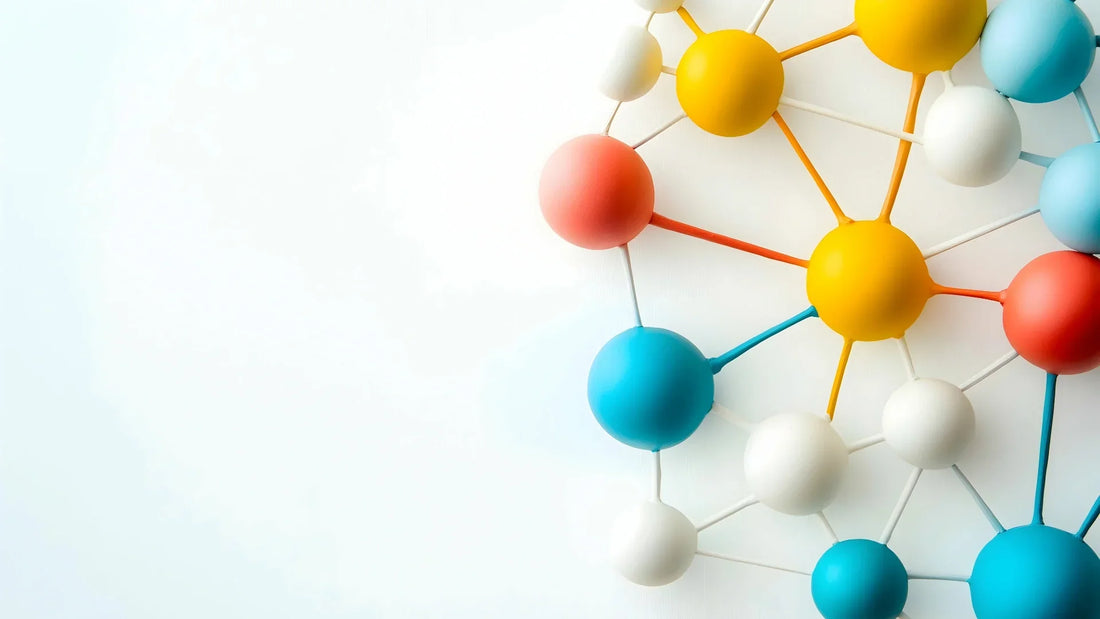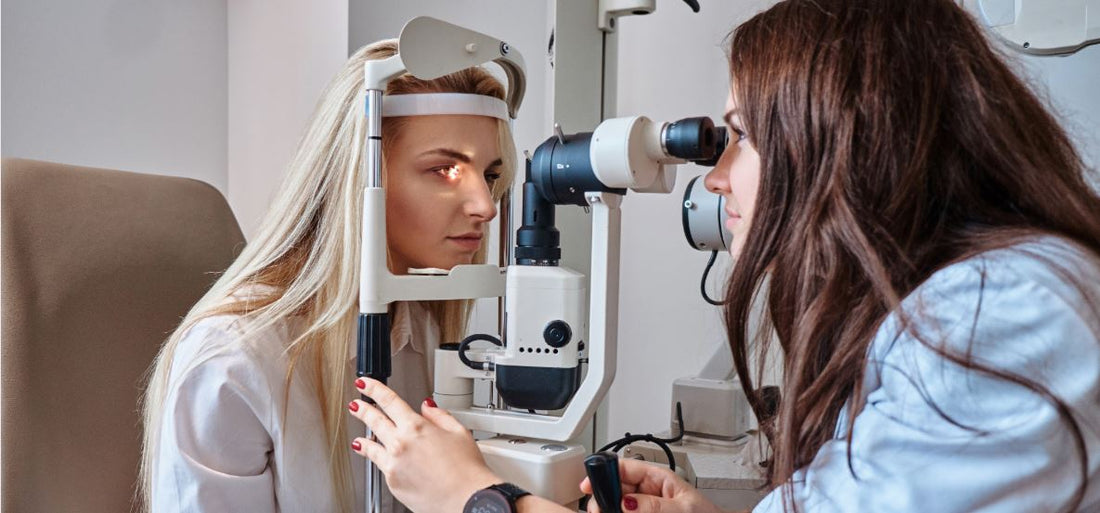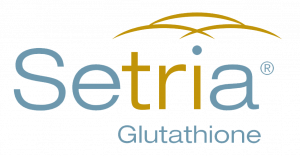Knowledge Hub
The lipolife masterclass series
lipolife masterclasses In today’s fast-paced world, maintaining optimal health can be a challenge. Our understanding of how our bodies function and the effects of the foods we consume on our health have evolved significantly in recent years. The importance of proper nutrition, exercise, and healthy lifestyle choices cannot be overstated. In our series of masterclasses, we delve into the latest research and advancements in managing health concerns through proper nutrition with the support of effective, liposomal supplements. We highlight the benefits of liposomal technology, which has gained significant popularity in recent years as a delivery method for supplements and nutraceuticals. Our expert speakers share their insights and knowledge on a range of topics, including the role of nutrition in maintaining good health, the benefits of specific supplements and the latest research on liposomal technology. Whether you are a health enthusiast or simply looking to improve your overall well-being, this series of masterclasses is designed to provide you with the knowledge and tools you need to take control of your health. So sit back, relax, and join us as we explore the fascinating world of nutrition and liposomal supplements. Menopause While many women focus on hormone replacement therapy (HRT) through menopause, the latest survey shows that 49% do not plan on taking it and instead, are searching for holistic alternatives. Growing evidence is pointing towards the use of botanicals and herbs to alleviate menopausal symptoms such brain fog, fatigue, hot flashes and beyond. Our menopause masterclass features wonderful Nutritionist, Phoebe Liebling, who unpacks and educates on the world of #Menopause, what’s to be expected in a person’s menopausal journey and how you can manage the symptoms. Mental Health In England, 1 in 6 people report experiencing a common mental health problem (such as anxiety or depression) in any given week.Approximately 1 in 8 children and young people aged 5 to 19 in the UK have a diagnosable mental health condition. Phoebe’s back to discuss #mentalhealth and the lifestyle measures we can take to give our minds that extra support. PCOS Polycystic ovary syndrome (PCOS) is a common condition affecting around one in 10 women in the UK. lipolife partnered with registered Nutritionist, menstruation and hormone specialist, and author of the book ‘You Can Have a Better Period’ Le’Nise Brothers, to take a deeper dive into the expansive world of PCOS. Cardiovascular Health Stress is a natural part of life, but it can become overwhelming if not managed properly. When stress levels get too high, they can lead to negative physical and mental health consequences, such as headaches, anxiety and depression. In turn, failing to deal with stress can increase your chances of cardiovascular diseases. In this session, Phoebe Liebling shares valuable tips and insights on how to improve your heart health, reduce your risk of cardiovascular disease, and live a healthier life.
Learn moreWhen it comes to matters of the heart, every day should be Valentine’s Day.
It's Time for a Heart to Heart Cardiovascular disease is one of the leading causes of death in the UK, accounting for roughly one in four deaths. Over 7 million people in the country live with some form of cardiovascular condition, including coronary heart disease and stroke. Various risk factors such as high blood pressure, high cholesterol, obesity, smoking and physical inactivity contribute significantly to this health challenge, impacting not only mortality rates but also quality of life through long-term disability and reduced mobility. Cardiovascular disease is the term for all types of diseases that affect the heart or blood vessels, including coronary heart disease (clogged arteries), which can cause heart attacks, stroke, heart failure and peripheral artery disease. Coronary heart disease occurs when plaque (a combination of fat, cholesterol, calcium and other substances found in the blood) builds up in your arteries. The plaque reduces the amount of oxygen-rich blood getting to your heart, which can cause chest pain (also called angina). Plaque can also lead to blood clots, which block blood flow and are the most common cause of a heart attack. Take Action! There’s a lot you can do to help protect your heart and these four tips are simple to implement into your daily routine. Engage in regular, moderate activities like brisk walking, cycling, or swimming to keep your heart strong. Focus on whole foods, including fruits, vegetables, lean proteins and whole grains in your diet. In addition, reducing salt, sugar and unhealthy fats can significantly benefit your cardiovascular system. Include relaxation techniques such as meditation, deep breathing or yoga in your daily routine – to still your mind and rest your heart. Aim for 7-9 hours of quality sleep each night to help your heart recover and rejuvenate. Maintaining a healthy heart is vital for overall health and wellbeing. While a balanced diet and regular exercise are essential for good heart health, supplements can also help support heart function. Why not show your heart some extra love with a little help from lipolife® science? Our Cardiovascular Supplement Pack combines nutrients that work synergistically to promote better circulation, support healthy blood pressure and enhance overall heart function. lipolife Cardiovascular Supplement Pack Omega-3 Fatty Acids: Omega-3 fatty acids, such as those found in fish oil supplements, have been shown to reduce triglycerides, lower blood pressure, and decrease the risk of heart attack and stroke. Coenzyme Q10: Coenzyme Q10 (CoQ10) is an antioxidant that helps to generate energy in the body’s cells. It may also help lower blood pressure and reduce the risk of heart disease. Resveratrol: Resveratrol has been shown to have anti-inflammatory properties, which may help reduce inflammation in the blood vessels and heart. Resveratrol may also help lower blood pressure by relaxing the blood vessels, making it easier for blood to flow through. Phosphatidylcholine: By ensuring healthy cell membranes, aiding in lipid transport and metabolism, supporting liver detoxification processes, and mitigating inflammation, phosphatidylcholine plays a supportive role in maintaining overall heart health. By incorporating this supplement pack into your daily routine, you can take a proactive step towards nurturing your heart, so it continues to power every moment of your life. To learn more about cardiovascular health and how these supplements can help support your heart, check out our Masterclass with award-winning Nutritionist, Phoebe Liebling.
Learn moreSupplement Support through a Cancer Diagnosis
Nisha Tanna is a qualified psychologist, the owner of 3 businesses, a vegan foodie, a wife and mum to two young children. In 2016, Nisha was diagnosed with breast cancer. Tears rolled down my cheeks. I couldn’t breathe. I thought ‘They must have the wrong girl.’ I was a healthy 36-year-old with two gorgeous toddlers.I didn’t have time for cancer. Following six rounds of chemotherapy, a mastectomy, full axillary clearance and then radiotherapy weeks later, Nisha was faced with difficult times both physically and emotionally. But with the support of family, friends and top consultants within the field of integrative cancer treatment, Nisha found her strength. Driven by her passion for knowledge and wellness, Nisha renewed her research into living a healthy lifestyle and particularly understanding more about the causes and prevention of cancer. It was during this period that Nisha was introduced to lipolife and since then, we have remained in touch, supporting Nisha however we can. Nisha reached out to us recently to share these thoughts: “I was introduced to lipolife almost 8 years ago, by a dear friend who uses lipolife products regularly, following a cancer diagnosis. I was aware of the efficacy of liposomal vitamin C, and lipolife quality supplements and was interested in their liposomal vitamin C to support my recovery. There was no doubt that lipolife were the market leaders in liposomal encapsulation and at that time there was no other manufacturer that produced anything close to what lipolife were producing and readily accessible. As I completed conventional cancer treatments I felt reassured that a lot of the damage caused by harsh/toxic treatments could be mitigated and abated by the high therapeutic dose vitamin C I was taking. My recovery seemed faster. My energy levels increased. My consultants commented on how quickly I seemed to be bouncing back. I attribute this in part to my supplementation. “The team at lipolife have also been incredibly kind and generous by supporting me with advice and ongoing discounts which in turn has allowed me to continue using vitamin C so regularly as my work load had to be reduced for a long time and in turn my income dramatically lowered. I’m so grateful to the staff/founders of the company for supporting my road to recovery with discounted costs and advice. It’s humbling that a company that has not even met me, has supported my health and even called me just to say hello and how are you doing, that alone is a great mood booster and demonstrates that lipolife have a kind beating heart at their business core. I now recommend lipolife and their products to my friends, family, and clients. Thank you lipolife and to all those that have supported me all this time.” Nisha started Beyond Breast Cancer with the aim of inspiring and connecting with women around the world, supporting them to live with, live through, and prevent ‘dis-ease’. To help shoulder the burden and help them get to know the many therapies and mindsets that have helped her. For more information, please visit Nisha’s website at www.nishatanna.co.uk
Learn moreNew Liposomal Kids Multivitamin
The Ultimate Nutritional Boost for Little Ones As parents, ensuring that our children receive all the essential nutrients they need for healthy growth and development is a top priority. Enter picky eaters, health concerns and busy schedules, it can be challenging to guarantee that they’re getting a well-rounded diet every day. That’s where lipolife® Kids Liposomal Multivitamin enters the playground. A cutting-edge supplement designed to give your children the nutritional support they need, in a form that maximises absorption and efficacy. What’s Special about this Multivitamin? lipolife® Kids Liposomal Multivitamin is a comprehensive food supplement formulated specifically for children. It contains a blend of essential vitamins and minerals that support overall health, cognitive function, immune system strength, and energy levels. What sets this multivitamin apart from traditional oral supplements is its liposomal delivery system; a technology that significantly enhances the bioavailability of nutrients. Why Liposomal Delivery? Liposomal delivery involves encapsulating vitamins and minerals within tiny lipid (fat) particles called liposomes. A liposomal food supplement offers several key advantages: Enhanced Absorption Traditional vitamins can be broken down by stomach acids and enzymes before they are fully absorbed. Liposomes help protect the nutrients, allowing them to pass through the digestive system more effectively and be absorbed systemically. Better Taste Liposomal encapsulation can mask the sometimes unpleasant taste of vitamins, making the supplement more palatable for children. This is particularly true for B vitamins which can taste very funky! Increased Efficacy Because more of the active ingredients reach systemic circulation, liposomal supplements can be more effective, even with lower doses compared to traditional supplements. Key Ingredients in lipolife® Kids Liposomal Multivitamin lipolife® Kids Multivitamin is packed with a carefully selected range of essential vitamins and minerals: Vitamin ASupports vision, immune function, and skin health. B-Vitamins (B1, B2, B3, B5, B6, B12)Crucial for energy production, brain development, and nervous system health. Vitamin CA powerful antioxidant that boosts the immune system and promotes healthy skin and tissue repair. Vitamin D3Essential for bone health and immune function. Vitamin EProtects cells from oxidative stress and supports immune health. Vitamin K2Plays a vital role in bone metabolism and cardiovascular health. MagnesiumSupports muscle and nerve function, as well as energy production. NucleotidesSupports growth, immune health, cell renewal, tissue repair and injury recovery. ZincImportant for immune function, growth, and development. The Benefits of lipolife® Kids Liposomal Multivitamin Comprehensive Nutritional SupportThis multivitamin provides all the essential nutrients your child needs for healthy growth, cognitive development and building a strong immune system. Gentle on the StomachThe liposomal delivery system ensures that the nutrients are absorbed efficiently, minimising the risk of stomach upset often associated with traditional vitamins. Convenient and Easy to TakeThe supplement comes in a liquid form, which is easy to administer to children who may have difficulty swallowing pills. Plus, the very yummy taste makes it more likely that your child will ask for their next dose, maybe even beg for it! Quality You Can Trustlipolife® are known for commitment to high-quality, scientifically-backed supplements. Our products are rigorously tested for purity, potency and safety. Why Choose lipolife®? lipolife® are a leader in liposomal supplement technology, offering a range of products that provide enhanced nutrient delivery and absorption. The launch of our new Kids Liposomal Multivitamin is a testament to our commitment to innovation and quality, helping parents ensure their children receive the vital nutrients they need in the most effective form possible. In a world where nutritional gaps in children’s diets are all too common, lipolife® Kids Liposomal Multivitamin offers a tasty and effective solution. Leveraging the power of liposomal technology, this supplement ensures that your child gets the most out of every drop, supporting their health, growth, and development in a way that traditional food supplements simply can’t match. If you’re looking for a multivitamin that delivers real results, is easy for kids to take, and is backed by cutting-edge science, lipolife® Kids Liposomal Multivitamin is the perfect choice.
Learn moreLegitimate Liposomes
When is a liposome not a liposome? (hint, it has nothing to do with viscosity!) You may have read recently that the “gold standard” of liposomes can be found in a thick, viscous formula with a “gel-like” consistency. We’re here to tell you this is categorically untrue and, unlike those that will remain unnamed (for now), we can prove it. All Science, no Fiction Firstly, it’s important to know that as a consumer, you cannot tell if a liposomal formula contains liposomes just by looking. Unless you have superpowers… Professor Mohammad Najlah, Professor of Pharmaceutics & Nanomedicine at Anglia Ruskin University, recently wrote a piece for The Conversation and here are some eye-opening highlights: Fact 1:Liposomal formulations are watery rather than creamy or gel-like. Fact 2:Manufacturers add thickening agents and other additives to make their products look more appealing. Fact 3:Neither colour nor thickness can tell you whether a product contains high-quality liposomes, as some companies may claim. Read the full article “If a company says its products contain liposomes, always check its website for evidence such as electron microscope imaging in production.The sizes of liposomes vary, but it is impossible to see them without a microscope.” Professor Mohammad Najlah, Professor of Pharmaceutics & Nanomedicine and Pharmaceutical Research Group Lead at Anglia Ruskin University The above images might look like plates of baked beans or frog spawn but these are actually a random selection of lipolife liposomal formulations under a TEM (Transmission Electron Microscope). To a Pharmaceutics or Nanomedicine expert, these images are the liposomal equivalent of a Monet or Van Gogh.The liposomes are homogenous, below 200nm and there’s plenty of them. These TEM images evidence very high quality, authentic liposomal formulations. Don't mistake marketing for science. Any company can claim their product is the best and any company can say they commissioned an independent study of their products and their competitors’… but is it published?
Learn moreImprove eye health through nutrition
The human eye, a marvel of biological engineering, relies on a symphony of intricate components to function at its best. Just like any other part of the body, the eyes demand a balanced intake of nutrients to preserve optimal function and sustain clear vision. Understanding Eye Anatomy To appreciate the role of nutrition in eye health, it’s essential to grasp the fundamental structures that make up our eyes. The eye is a complex organ comprised of interconnected parts, including the cornea, lens, retina, and optic nerve. Light enters through the cornea, travels through the lens, and focuses on the retina. Here, photoreceptor cells, known as rods and cones, convert light into electrical signals. These signals are then transmitted via the optic nerve to the brain, allowing us to perceive the world around us. What are the key nutrients for optimal eye-health? Vitamin A: Perhaps the most renowned nutrient for eye health, vitamin A is vital for maintaining clear vision. A deficiency can lead to night blindness and other vision problems. Vitamin A plays a critical role in retina health and the function of light-sensitive cells. Foods rich in vitamin A include sweet potatoes, carrots, spinach, and liver. *Taking a multivitamin supplement is a great way to complement the nutrients found in food. Vitamin C: Another essential antioxidant, vitamin C, plays a crucial role in protecting the eyes from oxidative damage caused by free radicals. It also supports the health of blood vessels supplying the eyes. Excellent sources of vitamin C include berries, citrus fruits, and bell peppers. *While vitamin C is generally well absorbed in most people, it does not remain in circulation for long (generally only a couple of hours) As we head into the winter months, lipolife flavoured vitamin c could be an option for those seeking a great tasting supplement. Zinc: A vital mineral that is indispensable for maintaining the health of the retina. It assists in the transportation of vitamin A from the liver to the retina, where it’s crucial for vision. Therefore, maintaining adequate zinc levels is essential. Foods high in zinc include oysters, beef, chickpeas, and pumpkin seeds. *The body doesn’t store excess zinc, so it must be obtained regularly from your diet. Omega-3 Fatty Acids: Particularly, docosahexaenoic acid (DHA), is essential for maintaining the structure and function of cell membranes in the eyes. Omega-3 sources include fatty fish such as salmon, walnuts, and flaxseeds. *A plant-based alternative to traditional fish oils in a highly absorbable form. The Role of Antioxidants Antioxidants are compounds that shield the body’s cells, including those in the eyes, from the harm inflicted by free radicals—unstable molecules that can damage cells and contribute to eye conditions such as cataracts and age-related macular degeneration (AMD). Vitamins C and E, as well as lutein and zeaxanthin, function as antioxidants in the eye, neutralising free radicals and diminishing the risk of oxidative damage to the retina and other eye tissues. A diet abundant in fruits and vegetables, which are rich in these antioxidants, can be instrumental in preserving eye health. The Importance of a Balanced Diet While individual nutrients undoubtedly play pivotal roles in maintaining eye health, the synergy between various nutrients must not be overlooked. Interactions between nutrients can affect their absorption and utilization, underscoring the importance of a well-rounded diet featuring a diverse array of foods. Furthermore, maintaining a healthy weight through a balanced diet can serve as a preventive measure against conditions like diabetes and hypertension—risk factors for eye diseases such as diabetic retinopathy and glaucoma. In this holistic approach to eye health, nutrition plays a pivotal role in safeguarding our windows to the world.
Learn moreBeating the winter slump with antioxidants
Antioxidants and your health For those of us in the Northern Hemisphere, this time of year brings fewer daylight hours, colder temperatures and limited plant growth. It’s not uncommon to feel the effect of ‘winter blues’ with Seasonal Affective Disorder (SAD) affecting more than 12 million people in Northern Europe with symptoms of depression affecting individuals during winter months (1). SAD can manifest as low mood, fatigue, insomnia or sleeping too much, overeating, difficulty concentrating and not enjoying things you usually would. Reduced sun exposure is commonly associated with its influence on Vitamin D levels. Without supplementation, our most useful source of Vitamin D is from the sun. In the UK, it is recommended for most adults to supplement with Vitamin D throughout the year to support immunity, and energy levels and prevent deficiency for individuals who spend the majority of peak sunlight indoors or usually cover most of their skin outdoors (2). Additionally, it is important to understand the influence on our circadian rhythm. With minimal exposure to natural sunlight and the effect of blue light from screen use and bright lights can play havoc with our natural processes that are influenced by sunlight such as our sleep and hormones including serotonin and dopamine which play a role in regulating mood, emotion, appetite and digestion (3). Getting outside during peak sunlight hours as much as possible can have a positive effect on our vital functions and general well-being. Furthermore, during this period many of us become less active due to colder temperatures and whilst physical activity is not only great for weight management – working up a sweat can provide a surge of endorphins, endocannabinoids and dopamine with research touting exercise as a potential therapeutic aid to minimising symptoms of SAD or mood disorders (4). On a cellular level, antioxidants play a formidable role in cell metabolism (the process that converts energy for us to function) and protection from free radicals. An imbalance of free radicals in the body causes a cascade of oxidative stress, altering the cell membrane structure and function (5). Enzymatic antioxidants such as superoxide dismutase (SOD) convert harmful oxidative products and non-enzymatic antioxidants interrupt the chain reaction of free radicals. Naturally, antioxidants are found in a range of colourful plant sources; most commonly ascorbate, tocopherol, glutathione and betaine. Antioxidants can also be categorised by their solubility in fat or water. For example, Vitamin E, carotenoid and lipoic acid are fat soluble whereas, Vitamin C is water soluble (6). A varied diet of colourful, fresh plant sources is optimal which would include nutrients such as: Bright orange carotenoids and redder lycopene from guavas, papaya, carrots and fresh tomatoes for eye and heart health Blue anthocyanins from blueberries provide potent anti-inflammatory, microbial and oxidative properties Cruciferous vegetables supply sulforaphane to support our DNA and cellular health Eating a seasonal diet may lower our intake of antioxidants. Consideration of how eating patterns will likely be influenced by our environment and craving comfort foods may provide temporary relief but additional nutritional support can provide a sustainable solution. As mentioned, physical activity holds a wide range of benefits physically and mentally. For many of us, the issue can be motivating ourselves to start exercising and that could be linked to low energy. Coenzyme Q10 (CoQ10) is a lipid-soluble antioxidant and an essential cofactor for cellular energy processes (7). As we age, we produce less of this compound, and many find benefit from topping up levels through supplements to neutralise free radicals and support cellular energy production (8). Supplementation in liposomal form is superior due to its natural instability. On the other hand, over-exercising can negatively affect our well-being and particularly our immune function. Vitamin C, Zinc and Quercetin all support our immune function, gut health and defence systems. Vitamin C / ascorbate is commonly taken to support the immune system and reduce the duration of winter colds and has the potential to reduce oxidative and inflammatory biomarkers (9). When looking to increase activity levels, taking vitamin C in a liposomal form before exercise can help reduce muscle soreness (10). The mineral Zinc is essential for its role in antioxidant enzymes, adaptive immune cells and also possess anti-inflammatory properties (11). Chronic inflammation not only affects us physically but is also linked to neurological ailments (12). Dependent on Zinc status, studies have indicated supplementation with zinc can improve depressive symptoms (13) and testosterone levels (14). Sleep disturbances are linked to the hormone melatonin which is produced in the pineal gland at night time and is one of the key chemicals required for a healthy sleep/wake cycle. Interestingly it also holds antioxidant properties (15). Spending more time indoors during the colder months can increase our exposure to pollutants and toxins and is also a viable reason to consider additional nutritional aids. A lack of nutrients and exercise can inhibit our natural functions and puts a greater demand on nutrients like glutathione. Glutathione is a tripeptide and our body’s master antioxidant and can be supplemented to support our body’s defences and detoxification pathways. Glutathione is utilised for several antioxidant enzymes, mitochondrial function, cellular proliferation and neutralisation of free radicals. Higher levels of glutathione have been associated with better physical health and reduced incidence of neurodegenerative conditions, illness and liver disease (16). In summary, antioxidants hold a plethora of capabilities to support several physiological processes in the body that may require additional support during certain periods of the year. A diet based upon a wide variety of plant sources is key to providing an excellent supply of antioxidants to support overall function. When the immune system isn’t functionally optimally, we’re under stress or are suffering from symptoms of fatigue or sleep disturbances, antioxidant supplementation can bridge the gap to support greater health and well-being. For additional support for SAD contact your healthcare provider. Samaritans (tel:116 123 – https://www.samaritans.org/) are dedicated to providing 24/7, free and confidential support by phone. We are here to help everyone in the United Kingdom who may be looking for support with anxiety, depression, loneliness, stress, and suicide. References NHS Inform, 2022. https://www.nhsinform.scot/healthy-living/mental-wellbeing/low-mood-and-depression/beating-the-winter-blues NHS, 2020. https://www.nhs.uk/conditions/vitamins-and-minerals/vitamin-d/ Randy A. Sansone, MD and Lori A. Sansone, MD. Sunshine, Serotonin, and Skin: A Partial Explanation for Seasonal Patterns in Psychopathology? 2013 Jul-Aug; 10(7-8): 20–24. PMCID: PMC3779905. PMID: 24062970. Sandra Amatriain-Fernández, Henning Budde, Thomas Gronwald, Carla Quiroga. The Endocannabinoid System as Modulator of Exercise Benefits in Mental Health. 2021 Aug 11. PMCID: PMC8719298. PMID: 33342414 Carlsen MH, Halvorsen BL, Holte K, Bøhn SK, Dragland S, Sampson L, Willey C, Senoo H, Umezono Y, Sanada C, Barikmo I. The total antioxidant content of more than 3100 foods, beverages, spices, herbs and supplements used worldwide. Nutrition journal. 2010 Dec;9(1):3. Satish Balasaheb Nimse and Dilipkumar Pal. Free radicals, natural antioxidants, and their reaction mechanisms. Institute for Applied Chemistry, Department of Chemistry, Hallym University, Chuncheon, 200-702, Korea. Molyneux SL, Young JM, Florkowski CM, Lever M, George PM. Coenzyme Q10: is there a clinical role and a case for measurement? Clin Biochem Rev. 2008 May;29(2):71-82. PMID: 18787645; PMCID: PMC2533152. Francisco Miguel Gutierrez-Mariscal,1,2 Antonio Pablo Arenas-de Larriva. Coenzyme Q10 Supplementation for the Reduction of Oxidative Stress: Clinical Implications in the Treatment of Chronic Diseases. 2020 Nov; 21. PMID: 33114148; PMCID: PMC7660335 Rosales-Corral S, Tan DX, Reiter RJ, Valdivia-Velázquez M, Martínez-Barboza G, Acosta-Martínez JP, Ortiz GG. Orally administered melatonin reduces oxidative stress and proinflammatory cytokines induced by amyloid-beta peptide in rat brain: a comparative, in vivo study versus vitamin C and E. J Pineal Res. 2003 Sep;35(2):80-4. doi: 10.1034/j.1600-079x.2003.00057.x. PMID: 12887649. Bryer SC, Goldfarb AH. Effect of high dose vitamin C supplementation on muscle soreness, damage, function, and oxidative stress to eccentric exercise. Int J Sport Nutr Exerc Metab. 2006 Jun;16(3):270-80. doi: 10.1123/ijsnem.16.3.270. PMID: 16948483. Hunter J, Arentz S, Goldenberg J, Yang G, Beardsley J, Myers SP, Mertz D, Leeder S. Zinc for the prevention or treatment of acute viral respiratory tract infections in adults: a rapid systematic review and meta-analysis of randomised controlled trials. BMJ Open. 2021 Nov 2;11(11):e047474. doi: 10.1136/bmjopen-2020-047474. PMID: 34728441; PMCID: PMC8578211. Deleidi Michela, Jäggle Madeline, Rubino Graziella. Immune aging, dysmetabolism, and inflammation in neurological diseases. Frontiers in Neuroscience, VOLUME=9. 2015. Yosaee S, Clark CCT, Keshtkaran Z, Ashourpour M, Keshani P, Soltani S. Zinc in depression: From development to treatment: A comparative/ dose response meta-analysis of observational studies and randomized controlled trials. Gen Hosp Psychiatry. 2022 Jan-Feb;74:110-117. doi: 10.1016/j.genhosppsych.2020.08.001. Epub 2020 Aug 10. PMID: 32829928. Fallah A, Mohammad-Hasani A, Colagar AH. Zinc is an Essential Element for Male Fertility: A Review of Zn Roles in Men’s Health, Germination, Sperm Quality, and Fertilization. J Reprod Infertil. 2018 Apr-Jun;19(2):69-81. PMID: 30009140; PMCID: PMC6010824. Ferlazzo, N.; Andolina, G.; Cannata, A.; Costanzo, M.G.; Rizzo, V.; Currò, M.; Ientile, R.; Caccamo, D. Is Melatonin the Cornucopia of the 21st Century? Antioxidants 2020, 9, 1088. https://doi.org/10.3390/antiox9111088 Pizzorno J. Glutathione! Integr Med (Encinitas). 2014 Feb;13(1):8-12. PMID: 26770075; PMCID: PMC4684116.
Learn moreMenopause; the transformation of a woman’s lifestyle
Shop the Menopack-> Menopause – an impending doom of hot flashes and vaginal dryness or a natural phase of life we can optimise with tailored lifestyle interventions? Fact: As we age, our reproductive system changes. Notably, as we continue to live longer, women spend up to one-third of their lives post-menopause. With this, there has been a significant increase in the demand for menopausal knowledge and liberation, particularly in treatment options available for women pre, during and post-menopause. Peri and post-menopausal symptoms can include a combination of physical and physiological symptoms from anxiety, fatigue, and mood swings to urinary incontinence, hot flashes, night sweats, reduced libido and increased urinary tract infections (UTIs). Menopause can be defined as the end of reproductive life with the cessation of menses for 12 months due to a reduction in circulating oestrogen and the natural decline in ovarian reserve, and reduced sensitivity to follicular stimulating and luteinising hormones. Hormonal imbalances are the main culprit of the dreaded menopausal symptoms, and hormone replacement therapy (HRT) can help combat unpleasant and unwanted symptoms like mood changes, vaginal dryness and hot flashes. With any medical intervention, additional lifestyle support may provide additional support to manage symptoms and reduce side effects. A healthy balanced diet, and physical activity – particularly weight-bearing or resistance training, are known methods to help maintain a healthy weight and reduce some menopause side-effects. There is growing research on high-quality nutritional supplements and natural compounds that can help optimise the menopausal transition and life after by helping manage symptoms such as skin issues, fatigue and metabolic conditions. Post-menopausal women can experience several urogenital changes known to cause discomfort during a time when women could feel much more sexually liberated. Oestrogen is not only essential for reproductive health; it also influences the structure of our skin. Reduced oestrogen can result in reduced collagen production. Vitamin C supplementation is not only useful for our immune function and cellular health, but it can also support our bone mineral density (BMD) and synthesis of collagen. Increased collagen levels can help improve skin elasticity, hydration, and dermal collagen density. Take a look at this quick video from the NHS about how menopause impacts more than just your physicality. When women experience a significant decline in oestrogen, this can result in an imbalance of free radicals due to a loss of antioxidant protection from oestrogen. Free radicals damage lipids, proteins, and DNA; oxidative stress will accelerate the body’s ageing process and increase the risk of degenerative diseases when pro-oxidants overwhelm the antioxidant defence mechanisms. Research from ZOE has indicated over 60% of post-menopausal women have experienced brain fog, anxiety and sleep disturbances. This growing research and promotion of menopause knowledge is bringing the topic of menopause into public display. As half the population will experience this life stage, it is not only useful to understand the potential benefits many natural compounds can possess to help ease and minimise side effects. Liposomal supplements provide a superior delivery method to ensure the body can absorb and utilise nutrients to offer additional support for a healthy life pre and post-menopause. Quercetin, a well-researched bioflavonoid, is an immune boosting, anti-inflammatory and anti-histamine compound particularly useful for allergy symptoms, fighting viruses and inflammatory conditions. Quercetin is found in the skin of apples and onions but has a relatively low absorption rate; however, the absorption of quercetin can be enhanced in liposomal supplement form and with additional ingredients like vitamin C or Bromelain. This compound can scavenge free radicals to reduce oxidative stress and potentially preserve ovarian function in menopausal women. Along with reduced oestrogen, women also produce lower amounts of compounds such as Coenzyme Q10 (CoQ10). CoQ10 is a vital component of cellular energy and possesses antioxidant properties. Due to its role in energy metabolism CoQ10 can help reduce fatigue, and brain fog and improve total antioxidant capacity to reduce the incidence of metabolic diseases. Menopause affects BMD and makes these individuals more prone to developing osteoporosis due to increased osteoclast activity due to hormonal changes. Increased bone tissue breakdown and decreasing bone formation levels can also lead to greater mineral requirements. Magnesium is well-known for its multitude of enzymatic processes as well as its’ importance in vitamin D and calcium utilisation; not to mention its role in cognition, mental well-being, sleep, muscle function, and balancing hormones.
Learn moreSetria Glutathione
A unique tripeptide form of glutathione, Setria has been clinically shown to raise blood glutathione levels. Manufactured using a fermentation process, Setria® Glutathione is a powerful tripeptide that enhances the glutathione content of critical tissues. Glutathione is the most important antioxidant in the body. Setria® Glutathione is L-Glutathione or Reduced Glutathione and is superior to other glutathione based on the following features: Clinically studied to increase blood glutathione levels and support the immune system A pure and safe material with an assay value of 98.0% – 101.0% The Role of Glutathione Our bodies obtain glutathione in two ways: from the foods we eat and from our own internal production. Because of the body’s ability to make glutathione, it is not considered an “essential” nutrient. Exposure to toxins, ingested and environmental chemicals and even things as healthy as exercise can all increase free radicals and ramp up your body’s need for glutathione. Time of Day: According to researchers at Emory University, levels of glutathione vary over a 24-hour period, spiking about six hours after each meal and hitting their lowest point in the morning hours. Age: Young, healthy people tend to have enough glutathione. However, glutathione levels start to decline at around age 45 and continue to decline until death. Health Conditions: Glutathione status may be depleted by a variety of different health conditions. Diet: The best dietary sources of glutathione are freshly prepared meats and fresh fruits and vegetables (both raw and cooked). Most processed foods have little to no glutathione. Glutathione Antagonists: Some foods – such as cereals, bread, and dairy products – are not only lacking glutathione, they actually act as glutathione antagonists. Common beverages such as tea and coffee also contain glutathione -destroying compounds, although in lower concentrations. Lifestyle Factors: Because cigarette smoking and excessive alcohol intake cause an increase in free radical production, both habits deplete glutathione levels. Medications: Both prescription and over-the-counter drugs can lower glutathione status. Weight: People who are overweight tend to have lower glutathione levels than those who are within normal weight range because excess fat is correlated with oxidative (free radical-induced) stress. Evidence behind Setria “A little over 50 years ago it was recognized that many chemicals we are exposed to are activated in the body to reactive chemicals. The most central way that the body gets rid of these is by reacting them with glutathione.” – Dr. Dean Jones PhD, Professor of biochemistry, Director of Nutritional Health Sciences, Emory University Randomised controlled trial of oral glutathione supplementation on body stores of glutathione. Link to study Daily consumption of GSH supplements was found to be effective at increasing body compartment stores of GSH. The 2014 six-month clinical trial, led by Dr. John P. Richie of Penn State University, evaluated the efficacy of Setria® Glutathione supplementation at enhancing body stores of glutathione, and the results show that glutathione supplementation may represent an effective intervention strategy to not only enhance body stores but also boost the body’s immune function. About the Study Trial measured effect of glutathione supplementation at 250 mg/day and 1000 mg/day on glutathione levels in different blood components and exfoliated buccal mucosal cells over a six month period. Subjects were 54 healthy adults (41 females/13 males), 28-72 years of age (mean=46.6 years). Results of the study showed glutathione levels in the blood increased after one, three and six months vs. baseline at both doses. At six months, mean glutathione levels increased 30-35 percent in erythrocytes, plasma, and lymphocytes, and 260 percent in buccal cells in the high dose group (P<0.05). Glutathione levels increased 17 and 29 percent in blood and erythrocytes, respectively, in the low dose group (P<0.05). Natural killer cytotoxicity increased two fold in the high-dose group versus placebo at 3 months. A reduction in oxidative stress in both glutathione dose groups was indicated by decreases in the oxidised to reduced glutathione ratio in whole blood after 6 months.
Learn more













